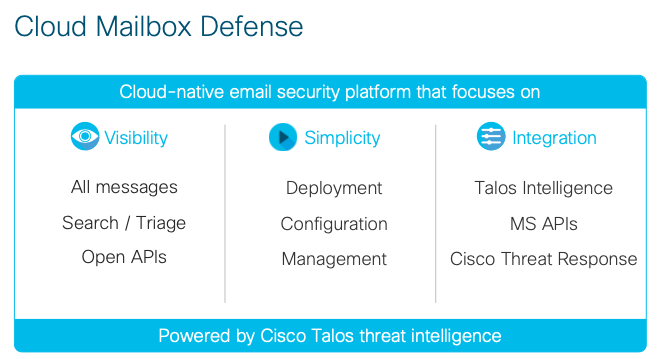
How Artificial Intelligence and Machine Learning Help WiFi Cyber Security
June 17, 2020
Ministry of Education launches new digital learning platform with participation from Google, Microsoft and Apple
June 18, 2020Addressing the Challenges of Cloud Email Infrastructures

Welcome to the third installment of our look into the future of the email security market! Last time, we looked at the continued importance of email security and the ever-present threats that exist for both on-prem and cloud email infrastructures. This time, we’ll be exploring how you can address these challenges.
Gartner’s 2019 Market Guide for Email defined the Cloud Email Security Supplement (CESS) market as a “strategic approach to email security by layering inbound, outbound, and internal detection and remediation capabilities.” This strategic approach for additional email security comes as a result of the increasing move from traditional email to cloud email providers and the fact that some Gartner clients “report dissatisfaction with natively available capabilities” of their cloud email providers.
That’s why today we’re excited to announce the arrival of Cisco’s solution to help address these strategic challenges in the cloud, Cisco Mailbox Defense.
Cisco Mailbox Defense is a CESS solution that allows you to take command of your Microsoft 365 mailboxes. It is a cloud native solution focused on three core principles.

Visibility – Over the course of this series, we’ve looked at the various risks and potential attack vectors that email can bring to your business. Providing that much needed degree of visibility into those risks is at the heart of Cloud Mailbox Defense. No more seeing a headline about a new attack and wondering if you are affected. Understand where your email is going, both internally and externally, search for threats, triage any threats you find, and be able to answer those questions on risk quicker than ever. You can see all the verdict details, attachments, and URLs within Cloud Mailbox Defense and it’s all powered by open APIs and delivered at web-scale and web-speed. This also allows us to address any privacy concerns you might have as well! Instead of needing to copy your emails to an external cloud, this approach allows us to conduct our inspection within the existing Azure infrastructure, keeping your emails in one secure location.
Simplicity – Cloud is all about simplicity and so is Cloud Mailbox Defense. As it is cloud native, it can be set up and start delivering protection and value to your business in 5 minutes. That’s not a typo either, when we say five minutes, we really do mean it’s that simple! We’ve also taken that approach and applied it to policy and remediation. No more complex and confusing verdicts and remediation actions. Cloud Mailbox Defense allows you to simply define your mode, your analysis options, and how you’d like to remediate through a simple wizard, and you are done. And, once again as a cloud native product, you can access all this through a web browser!
Integration – The simplest, most visible product in the world wouldn’t be useful unless it provided a security outcome. Cisco’s products have 20 years of email experience to draw upon and we’re leveraging all those years of fighting email threats, combined with the world class threat intelligence and expertise of our Talos team to bring an unparalleled security outcome to you. After all, Talos is one of the world’s largest non-governmental threat research agencies so they know a thing or two about the latest threats. Check out their blog for more details.
And if you’re an existing Cisco customer who leverages the power of Cisco Threat Response we have great news for you! Our new SecureX platform — utilizing the capabilities of Threat Response — will be integrated into Cloud Mailbox Defense to give you that additional richness and visibility to your investigations that you get from leveraging the whole Cisco Security Portfolio.

We’re excited about the future of email security, whether it’s on-prem or in the cloud, and with Cloud Mailbox Defense, we know you will be too. Take command of your mailbox by signing up for our trial waitlist.
Looking for more details about Cloud Mailbox Defense? Check out the At-A-Glance and Gartner Newsletter.
The post Addressing the Challenges of Cloud Email Infrastructures appeared first on Cisco Blogs.

